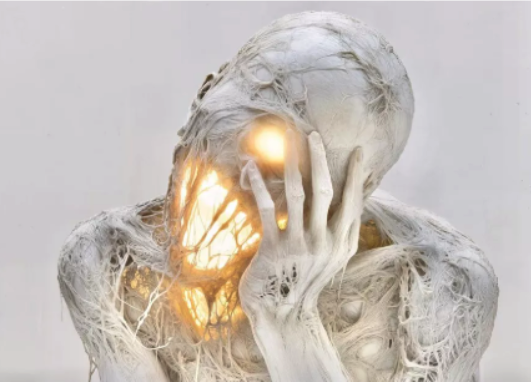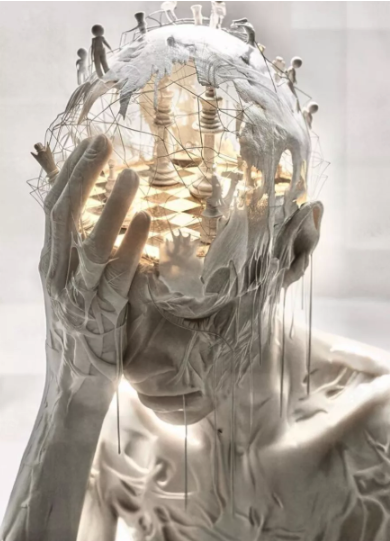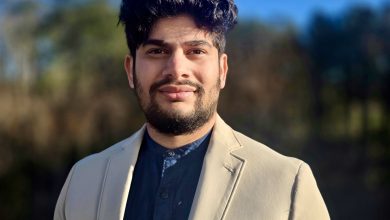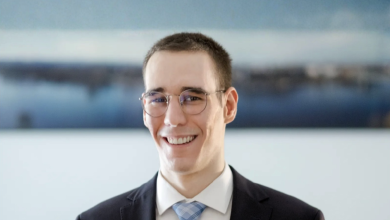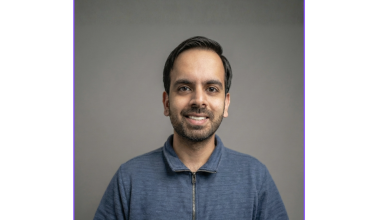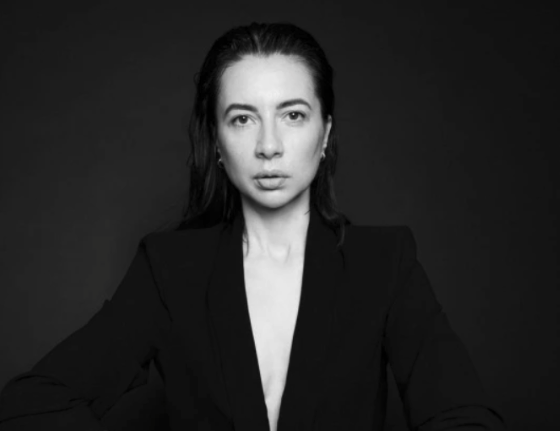
Elena Kotenko built a future many admired: a PhD in international law, a secure academic path, and the respect of colleagues.
Yet late at night, when the books closed and the research papers fell silent, she found herself sketching ideas for films that did not yet exist. Myths returned to her thoughts like fragments of half-remembered dreams.
The pull of imagination grew stronger than the gravity of legal frameworks. She chose to step away from the structured path of law and rebuild her life on the unpredictable ground of art.
Today, she creates cinematic films and art collections using generative AI, shaping surrealist narratives that blend memory and mythology with the cinematic vision.
Leaving Behind Law to Build a Visual Language
Kotenko’s path out of law started as a quiet conflict. Years of scholarship sharpened her analytical voice but restricted her creative one.
The study of ethics and ownership fascinated her, but the written arguments remained trapped in academic form. At the same time, images haunted her. She saw potential for narrative outside of legal text, a way of translating philosophical questions into visual language.
By early 2025, she redirected her energy toward art. Generative AI became her medium of choice because it opened a field where code could bend toward poetry.
She worked relentlessly, shaping fragments into experimental sequences. By April, her efforts reached public view at an exhibition in London. The acclaim from curators and critics provided both encouragement and validation.
The legal career she once relied on no longer defined her. Academic training instead became the foundation for a new role as an artist.
Building a Distinct Creative Identity
With momentum established, she created lenko.group as her personal brand and artistic signature. This identity represents more than a name. It signals her approach: cinematic, mythic, surreal, and unapologetically experimental.
Through lenko.group, she has developed both curated art collections and AI films that blur the boundaries between narrative cinema and fine art.
“I work with AI not to imitate reality, but to fracture it, to let its shards reflect memory, myth, and emotion in unexpected ways,” she explains, “I do not see technology as an end in itself, but as a mirror that can reveal deeper truths of the human condition.”
Image: Elena Kotenko’s Fracture Point AI art | source: artsy.net
Gaining Global Recognition Through Exhibitions and Media
In 2025, her work will be presented in London, Seoul, and Tokyo, positioning her among rising voices in contemporary art that employ generative AI as a medium. Each exhibition emphasized not only the innovation of technique but also her ability to deliver deep emotional resonance.
International publications took notice. Features in NY Weekly Magazine, WOW WORLD Magazine, The Insider Weekly, and Woman’s Week profiled her practice.
She was also named among the Top 10 Influential Women to Watch in 2025. Later this year, Artist Talk Magazine will devote a two-page spread to her career and philosophy.
Her acceptance into Artsy, by gallery invitation, further confirmed her standing within the art market. These achievements demonstrate that her voice resonates across both critical and commercial landscapes.
Using Philosophy and Ethics to Explore AI and Storytelling
The imprint of her academic past remains visible in every project. Years of research in law, philosophy, and ethics have influenced her exploration of AI as a medium.
She questions authorship, challenges ownership, and interrogates the fragility of memory. Instead of writing theory, she translates it into imagery that engages audiences directly.
She rejects the notion that AI authors anything. “In my practice, machines are not authors; they are instruments, like brushes or cameras, carrying the weight of human imagination,” she explains.
Her statement reflects her broader conviction that AI contributes to artistic life only when guided by human vision and creativity.
Image: Elena Kotenko’s End Game AI art | source: artsy.net
Facing the Challenge of Reinvention With Vulnerability
Leaving a successful academic career carried a significant risk. It meant letting go of stability and walking into uncertainty. The challenges were not only technical but also emotional in nature.
“I learned to walk into fear, but not into pain. Embracing the unknown without betraying my inner integrity. This principle has guided me through doubts and setbacks, turning vulnerability into a source of creative strength,” she reflects.
Mastering generative AI required patience, but the greater test came in sustaining authenticity while working with machine-driven processes.
“Each obstacle became an opportunity to define my own position: to prove that technology can serve human imagination rather than overshadow it,” she added.
Her reinvention did not come from confidence alone. It came through persistence and willingness to remain exposed while continuing to create.
Expanding Toward Auteur Cinema and Global Dialogue
Her current focus lies in expanding scale and ambition. She is developing an auteur-style AI film that blends archetypes and mythology into cinematic rhythm. The film aims to circulate across both art institutions and international festivals, bridging the gap between experimental cinema and contemporary art.
Beyond one project, she envisions her work contributing to cultural history. Exhibitions, critical publications, and collaborations with musicians form part of her larger mission.
She wants AI art to be recognized not as a passing novelty but as a meaningful practice with enduring significance. “My aspiration is to create a body of work that endures,” she explains. “A visual language where innovation and timeless human themes coexist, and where art becomes a space for both wonder and reflection.”
Reflections on Art as Revelation
Beauty, in her view, functions as revelation. Her films and curated works do not decorate space. They uncover what lies beneath. Fragility, myth, and memory find visual form through the structures she builds with AI.
Machines, she insists, cannot claim authorship. They remain tools, like brushes or cameras, shaped by the artist’s vision. Human imagination drives the work forward.
Her shift from law to art reveals more than a career change. It reflects the transformative power of risk when combined with conviction.
Knowledge, creativity, and courage combined to create a new identity and an international presence. In her hands, technology becomes a mirror for imagination, carrying fragments of memory and myth into images that speak across cultures.
Kotenko’s story resonates because it embodies reinvention without erasing the past. Law gave her structure. Art gives her resonance. Her decision to leave one world for another demonstrates the potential for human creativity to expand even in the most uncertain spaces.

